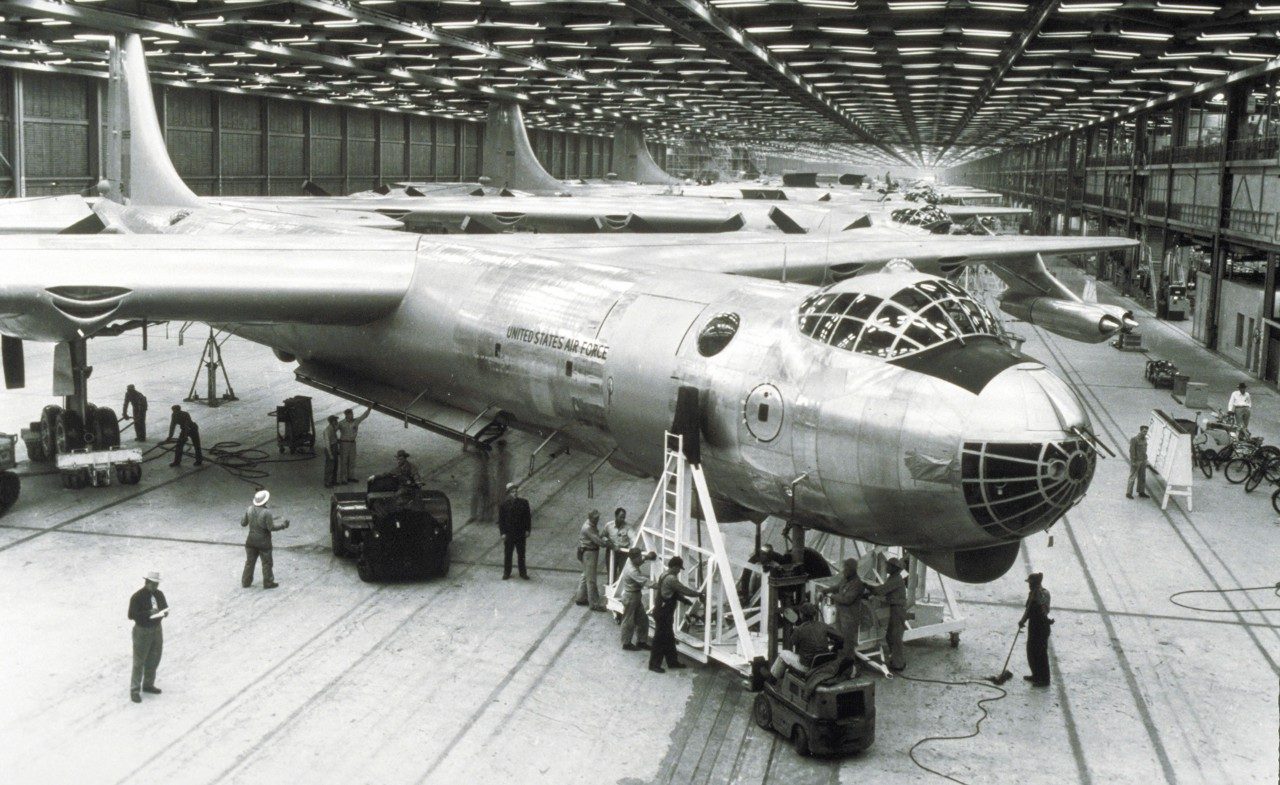On December 7, 1948, Lt. Col. John Bartlett climbed aboard the largest American warplane ever created—the B-36 bomber—and prepared for a flight that would change the course of the Cold War.
Just sitting on the runway, the B-36 turned heads. The 163-foot-long behemoth, with its 230-foot wingspan and six rear-facing compound radial engines, dwarfed every other warplane in America’s arsenal, including the B-29 Superfortress.
As one pilot later remarked, flying a B-36 was “like sitting in a bay window flying an apartment house.” But Bartlett’s mission wasn’t to idly daydream at 30,000 feet, it was to fly from Carswell Air Force Base in Texas to Hawaii, simulate dropping a bombon an assigned target and fly back home.
When Bartlett and his crew returned, having successfully hit his target without needing to refuel, U.S. military officials realized the B-36’s potential. If Bartlett could fly from Texas to Hawaii and return home, he could fly round trip from Maine to Leningrad, counterbalancing the threats of missile attacks from bellicose Russian generals in the East.
In the B-36, the United States had found a powerful deterrent against Soviet aggression.

Proving Its Worth
Conceived in 1941, when Germany controlled Europe and was poised to invade Britain, the B-36 was built as a contingency plan. If Britain fell, the United States would be forced to launch attacks from its own soil, requiring a bomber capable of flying long distances and dropping large payloads.
The most impressive design for the proposed bomber came from Consolidated Aircraft in Fort Worth, Texas, a Lockheed Martin legacy company. Although Consolidated’s B-36 was composed of a familiar cigar-shaped fuselage, its propellers were positioned in an unorthodox rearward-facing pusher configuration, which succeeded in smoothing the airflow over its massive wings.
But after the bombing of Pearl Harbor in 1941, production of B-36s were halted in favor of Consolidated’s more proven B-24 Liberator. The first B-36 was first flown in August 1946. Just three year later, some B-36 models could reach top speeds of 435 mph, a 50,000-foot ceiling, and a range of up to 12,000 miles, solidifying their position as an intimidating long-distance bomber and vital reconnaissance aircraft until their retirement in 1959.
The B-36 never saw combat action and never dropped a bomb on an enemy target, but did obtain a measure of fame when flown by Jimmy Stewart—a real-life Air Force Reserve brigadier general—flew it in the movie “Strategic Air Command. ” More importantly, the mammoth aircraft remained a potent deterrent throughout its service, and more than lived up to its nickname, “Peacemaker.”
Sources and Additional Reading
- Boyne, Walter J. Beyond the Wild Blue: A History of the U.S. Air Force, 1947-2007. New York: Thomas Dunne Books, July 2007.
- Griswold, Wesley S. “Remember the B-36?” Popular Science. Sept. 1961




